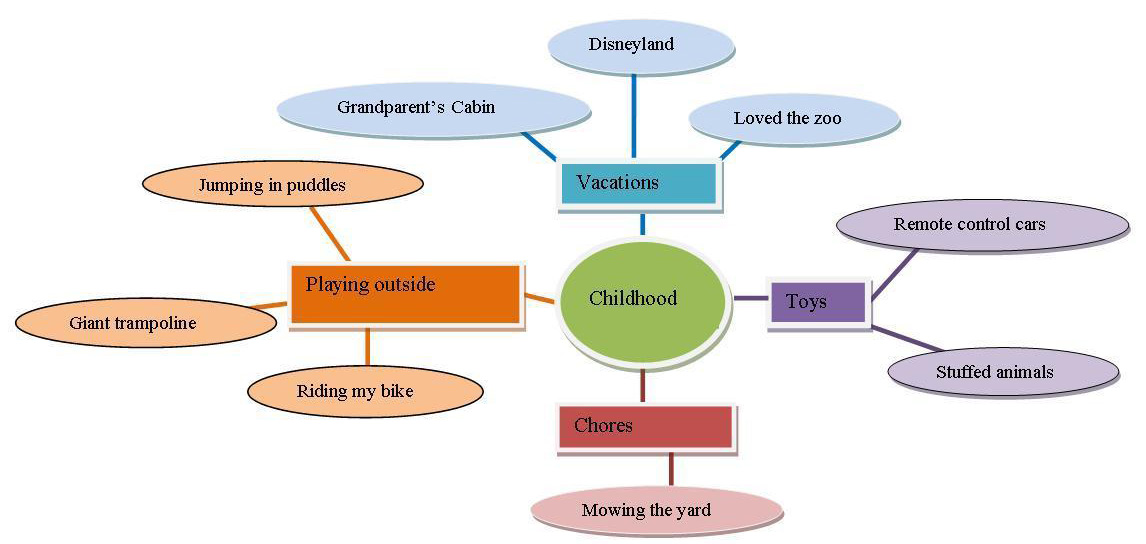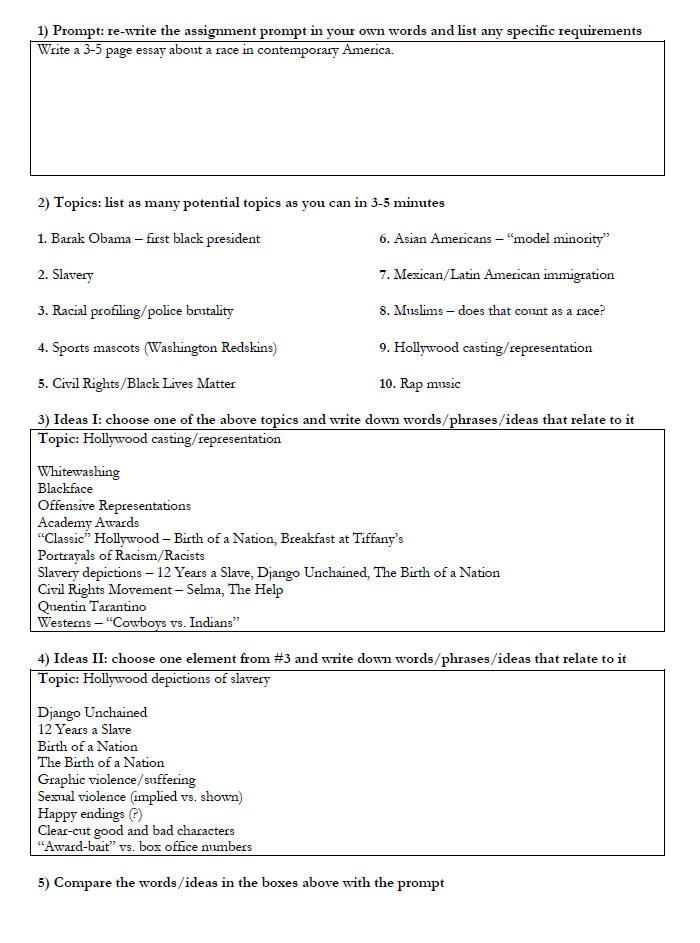
Throw some ideas out there!
Many students find that choosing a topic is a difficult step in the writing process. Brainstorming is a technique used to create a number of topic ideas and eventually narrow the choices down to one topic. Brainstorming can also be used to break down a specific topic into subtopics. Either way, it is a simple way to jumpstart your mind.
Brainstorming works for individual work as well as group work. It can be completed verbally, by jotting things down, or even by drawing. There is no right or wrong way to do it.
Techniques
Listing or Bulleting:
For this technique, you simply jot down thoughts (phrases, words, questions, etc.) that come to mind. It is a word association activity. For example: what does the word “childhood” make you think of? Thoughts can range from general topic ideas to subtopic ideas. Here is an example:
Sample assignment – write about something from your childhood.
1. Brainstorming general topic ideas:
- Childhood
- Vacations
- Chores
- Playgrounds/playing outside
- Toys
2. Brainstorming subtopic ideas:
- Chores
- Doing the dishes
- Once a week
- Dishwasher or hand wash
- Breaking dishes
- Smells
- Hated doing it, but got an allowance
Clustering/Mapping
This technique starts out in an extremely unorganized manner, but it works its way toward organized ideas. Simply grab a piece of blank paper, and write the topic/assignment in the center. From there, write any ideas, thoughts, etc. around the center. When you are finished, take a look at your mess and start connecting related ideas. Connect ideas by circling, drawing lines, or highlighting in coded colors. For example, clustering around something from your childhood might look like this:

There are a number of ways to brainstorm; clustering and listing are two commonly used techniques. You may find that you can even create your own brainstorming technique. Once ideas are listed or connect, individual ideas can continue to be broken down until you feel you have enough specifics to start outlining your writing.
Guided Brainstorming
You can also use a more structured or guided form of brainstorming, such as the one found on the back of the Writing Center’s “Brainstorming” handout. Here is an example of what that completed form might look like:

There are a number of ways to brainstorm: these are just some common techniques. You may find that you can even create your own brainstorming technique. Once ideas are listed or connected, individual ideas can continue to be broken down until you feel you have enough specifics to start outlining your writing.
Keep an open mind for all ideas – no idea is silly in brainstorming. Eventually you will eliminate the ideas you do not like.
By Amanda Neubauer, M.A.
Last updated October 2016 by Allison Haas, M.A.